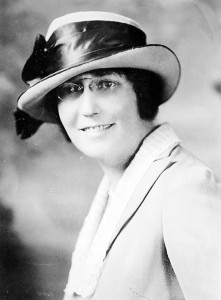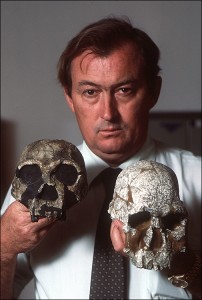Women’s History Month: Suffragist Nina Otero-Warren
Wednesday, March 9th, 2022
March is Women’s History Month, an annual observance of women’s achievements and contributions to society. This month, Behind the Headlines will feature woman pioneers in a variety of areas.
Many women have paved the way for women’s rights without much recognition. This year, the United States Mint has decided to honor notable women who made a difference in the United States. Soon you might see Nina Otero-Warren’s face on a quarter with the phrase “Voto para la mujer” which means “votes for women.” Otero-Warren was a Hispanic American politician, suffragist, and writer. A suffragist is a supporter of voting rights, particularly the right of women to vote. Otero-Warren was one of the first women to hold government office in New Mexico. She became the first woman from New Mexico and the first Hispanic woman to run for U.S. Congress. Otero-Warren was a leader of the woman suffrage movement in New Mexico.
Maria Adelina Isabel Emilia Otero was born on Oct. 23, 1881, in Los Lunas, south of Albuquerque, New Mexico. She was known as Adelina Otero as a child. As an adult, she was called Nina. She was the second child of Manuel Basilio Otero and Eloisa Luna Otero. Her parents descended from Spanish settlers. The Oteros and Lunas were both wealthy, controlling a large amount of land in the area during her childhood. Her father was fatally shot in a land dispute before she turned two. Her mother remarried in 1886 to Alfred Maurice Bergere. Bergere was an English businessman of Italian descent. Nina attended St. Vincent’s Academy, a Catholic grade school in Albuquerque, until she was 11 years old. She attended Maryville College of the Sacred Heart, in St. Louis, Missouri, for two years. When she was 13 years old, Nina returned to live with her family. The Bergere family moved to Santa Fe, New Mexico, when she was 16 years old.
In 1908, Otero married U.S. Army officer Rawson Warren. The two remained married for a brief time before she divorced him. Divorce was not widely accepted at the time, and she continued to use the name Otero-Warren, claiming to be a widow.
Otero-Warren joined the suffrage movement and became a leader in the Congressional Union (later the National Woman’s Party) in 1917. She advised printing suffrage literature in both English and Spanish to help win New Mexico’s ratification of the 19th Amendment to the U.S. Constitution, granting women the right to vote. Otero-Warren served as the first woman superintendent of public schools for Santa Fe County, from 1918 to 1929. She also worked for the American Red Cross, New Mexico State Council of Defense in the First Judicial District, New Mexico’s Republican women’s organization, and as inspector of Indian Services for the Department of the Interior. Otero-Warren was an advocate for bilingual and multicultural education at a time when English was the only language allowed in schools for Hispanic and Indigenous (native) children.
In 1922, Otero-Warren ran as the Republican Party nominee to represent New Mexico in the U.S. House of Representatives. She lost the election. Otero-Warren continued to work for the Board of Health, the Red Cross, and various literacy programs.
In the early 1930’s, Otero-Warren applied for a homestead outside Santa Fe with her partner, the American suffragist Mamie Meadors. They named the homestead Las Dos, meaning The Two Women. Otero-Warren and Meadors worked on the homestead building houses, maintaining roads, and fencing the property. They received the title for the land after five years, under the Homestead Act of 1862. Otero-Warren continued working the land after Meadors died in 1951.
Otero-Warren began writing in the 1930’s. Her article “My People” was published in the magazine Survey Graphic in 1931. She wrote a book, Old Spain in Our Southwest, published in 1936. Otero-Warren died on Jan. 3, 1965.




